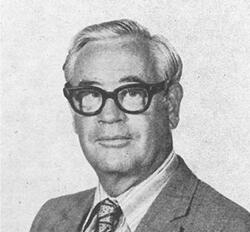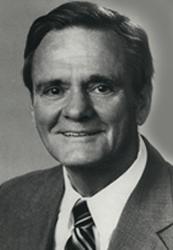1800's
This area along the East bank of the Mississippi River is called Indian Camp by European settlers. The site was historically used by the Houmas people (Native Americans) for hunting and fishing.
This area along the East bank of the Mississippi River is called Indian Camp by European settlers. The site was historically used by the Houmas people (Native Americans) for hunting and fishing.

This tract of land is purchased by Robert Coleman Camp; Camp grows sugar cane using the labor of 100 enslaved Africans.
New Orleans architect Henry Howard designs Indian Camp Plantation. Although Camp names his Plantation “Woodlawn” it is commonly known as Indian Camp. Howard also designed Nottoway and Madewood Plantation houses, among others.

An exposé published in the Daily Picayune newspaper creates an outcry in New Orleans—the public demands that “pest houses” in the city housing leprosy patients move out of the city limits.
Act 85 LA State Legislature, person’s diagnosed with leprosy in the state are to be quarantined to a selected location.

Act 80 of the LA State Legislature established a Board to run the future Louisiana Leper Home. Dr. Isadore Dyer is appointed first President of the Board.

In November the first seven leprosy patients are transported from New Orleans by river barge to what is by then a deserted Indian Camp Plantation.
The property is leased for five years in anticipation of finding a permanent location near New Orleans.

After signing a contract with the State of Louisiana, four Catholic Daughters of Charity of St. Vincent de Paul from Emmitsburg, Maryland arrive in April to provide care for the patients at the Louisiana Leper Home under the leadership of Sister Beatrice Hart, Sister Superior.

Public outcry prevents the Louisiana Leper Home from relocating to the New Orleans area. The State of Louisiana decides to purchase the Indian Camp property (350 acres) in December.
Many building improvements are made and the first covered walkways are constructed linking together the patients’ dormitories with the dining room and infirmary.

The surrounding community, called Island, Louisiana, is re-designated as “Carville” by the U.S. Postmaster General to clear up confusion in U.S. postal delivery (Louisiana has many towns with Island in its name). Louis Carville was the local postmaster.
John Early, a patient from the Louisiana Leper Home, escapes to testify before the U.S. Congress in Washington, DC as to the need for a United States Hospital for Leprosy.

On February 3rd, Senate Bill number 4086, an act to establish a National Leprosarium in Carville, Louisiana, is passed by the US Senate. WWI delays the selection of a site for the hospital.

The "Home" is sold by the State of Louisiana to the United States Federal Government for $35,000.
The United States Public Health Service (USPHS) takes operational control and the 'Home' becomes the United States Marine Hospital Number 66. . . The National Leprosarium of the United States.

A patient named 'Stanley Stein' prints the first issue of the 'Sixty-Six Star', an in-house patient news sheet that later becomes "The STAR", with the mission to “Spread the Light of Truth on Hansen’s Disease”. The STAR advocates changing the name of the disease called leprosy to Hansen’s disease, to mitigate stigma and honor the Norwegian doctor who discovered Mycobacterium Leprae under the microscope in 1873.

Sister Hilary Ross, DC and Dr. George Fite, USPHS, start a laboratory for drug testing. Sr. Hilary remains in residence until 1960 when she leaves to take a mission to Japan.

Veterans successfully lobby for improvements to the hospital—a new infirmary is completed.

The hospital is rebuilt to provide individual dormitory rooms for 450 patients.
A new Recreation Building and separate living quarters for the Daughters of Charity are completed.

Guy Henry Faget, MD, Director, National Leprosarium, pioneers sulfone drug therapy. Dr. Faget and his staff demonstrates the efficacy of sulfone drugs, including Promin, Diasone, and Promizole in the treatment of Hansen's disease (HD).

The 40/8 veterans organization donates a new printing press to “The STAR” patient’s magazine beginning an ongoing relationship of support.

Patients’ rights to vote in Louisiana elections are restored.
Betty Martin's autobiography, 'Miracle at Carville', hits the New York Times best-sellers list. Betty came to Carville at the age of 19. Her memoire recounts her life as a patient, the miracle of the sulfone drug treatment of the 1940’s.

The hospital establishes departments of Rehabilitation, Training, and Education.
Patients are allowed to marry. Patients’ dormitories are remodeled to accommodate couples.
Married team Drs. Paul & Margaret Brand relocate to Carville from India where Dr. Paul Brand begins the first rehabilitation research program and Dr. Margaret Brand becomes the world’s foremost expert on leprosy of the eye.

All patient admissions to Carville become voluntary.
Capt. Robert R. Hastings, MD, Ph.D., USPHS, defines the role of thalidomide in leprosy.

Capt. Robert R. Jacobson, MD, Ph.D., USPHS, pioneered work on drug resistance and its prevention by introducing Rifampin as part of the multi-drug therapy for HD in the United States.

Dr. W. F. Kirchheimer, Research Scientist, develops the armadillo model as a tool for the development of systemic disease similar to human HD. M. leprae has not been cultivated on artificial laboratory media to date.

Outpatient clinics are opened around the United States. Hansen’s disease officially becomes an outpatient diagnosis.
The new Health Resources and Services Administration assume federal responsibility for the management and operation of the HD facility at Carville.

The facility is renamed the "Gillis W. Long Hansen’s Disease Center"-after the U.S. Congressman, who successfully lobbied to keep “Carville” opened for HD patients when other PHS Hospitals around the U.S. were closed.

In a cost-sharing agreement with the National Hansen’s Disease Programs, the Bureau of Prisons opens a minimum security unit for inmates. There is an aging population of HD patients who chose to remain on-site.

Carville Historic District is placed on the National Register of Historic Places by the National Park Service.
The Center’s Laboratory Research Branch moves to the Louisiana State University (LSU) School of Veterinary Medicine in Baton Rouge.
Centennial Commemoration (1894-1994)–Recognition of the 100 year anniversary of the first patients’ arrival at “Carville”.
A $3.5 million grant is given to the Center’s laboratory research branch to test drugs against tuberculosis. The grant is headed by Dr. Scott Franzblou. Dr. James Krahenbhul, winner of the Distinguished Service Award for his macrophage work in 1990, was the Director of the Laboratory Research Branch.

Centennial celebration of the Daughters of Charity Mission to care for patients with Hansen's disease.
The National Hansen’s Disease Museum is founded.

The U.S. Congress passes a bill, authored by Congressman Richard Baker (R-LA), to relocate the Gillis W. Long Hansen’s Disease Center to Baton Rouge, Louisiana.
Those patients who voluntarily remained at “Carville” were given a choice of a lifetime medical stipend, remaining on-site as an ambulatory care patient, or relocating with the hospital to Baton Rouge.
The State of Louisiana resumes title to Indian Camp Plantation and begins a program for at-risk youths supervised by the Louisiana National Guard.

The Daughters of Charity officially end their Mission to care for patients at Carville.

Scientific evidence concluding that wild armadillos and many patients with leprosy in the southern United States are infected with the same strain of M. leprae is published.

The armadillo is recognized as model for studying the nerve damage caused by leprosy infection.
A second strain of leprosy bacteria shared by armadillos and patients is discovered in the Southeastern United States.
Molecular diagnostic tests to detect leprosy bacteria are implemented as standard of care at the NHDP.
Safety and efficacy studies performed by the NHDP Laboratory support advancement of a new leprosy vaccine into Phase 1 Clinical trials.